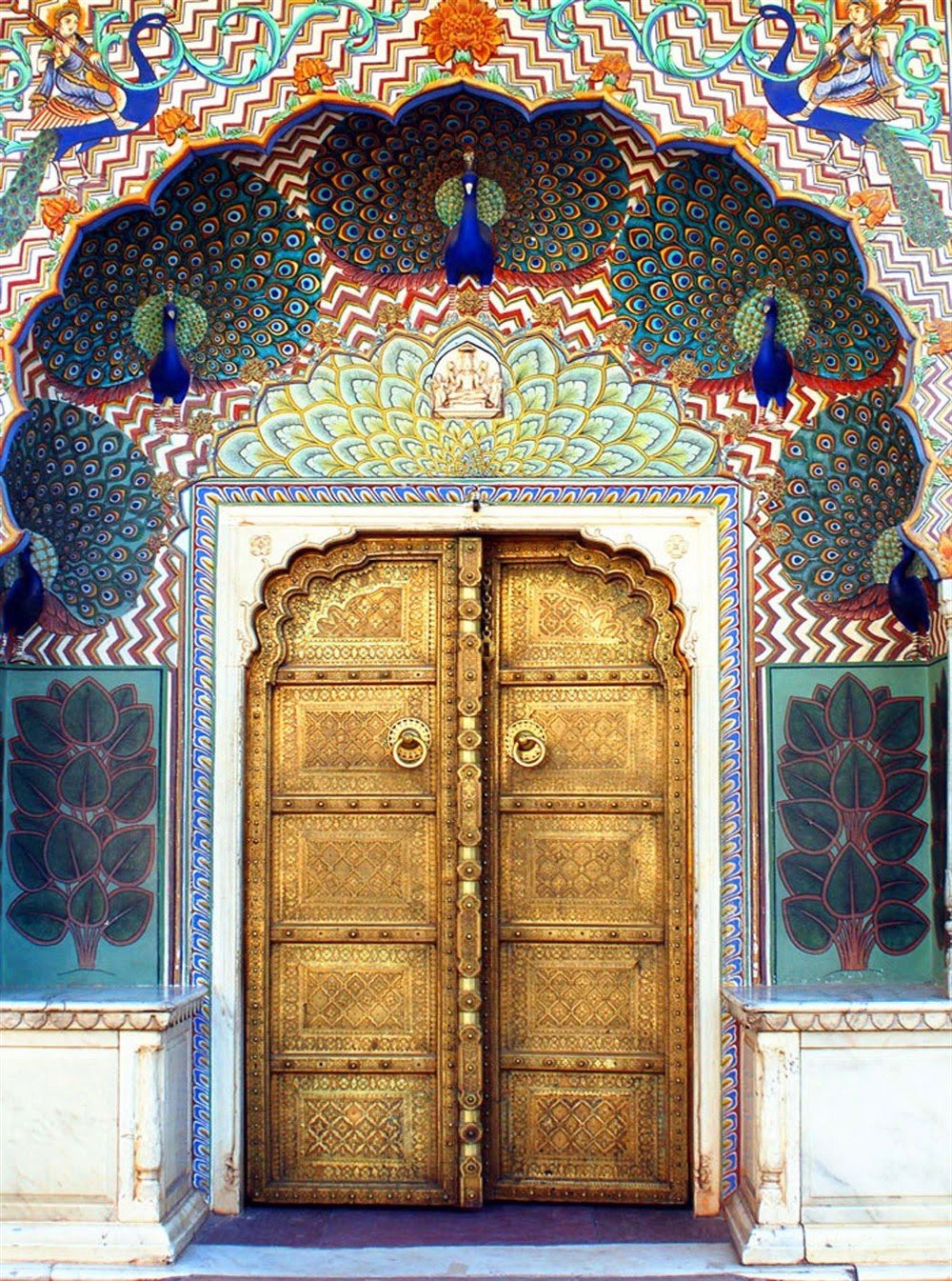#4410. Peacock Facade: Golden Doors of Rajasthan in Mughal Painted Frame
Before us is a remarkable example of Indian palace architecture — a richly decorated entrance portal, likely belonging to a palace in Rajasthan. Of particular value is the facade treatment of the doorway, designed as a multi-layered decorative arch.
The central element of the composition is the massive golden doors, made of metal with meticulously crafted geometric ornaments. The door panels are adorned with traditional ring-shaped handles and decorative overlays. The ornamental panels on the doors form a symmetrical grid, where each square is filled with a diamond-shaped pattern.
The portal is framed by a magnificent lotus-shaped arch, executed in the technique of multicolored painting with predominantly blue-turquoise palette. Above the door is a mandala-like ornament with a central niche, presumably containing an image of a deity. The upper part of the arch is decorated with exquisite depictions of peacocks with spread tails, creating an effect of a luxurious backdrop.
Special attention should be paid to the contrasting combination of the warm golden color of the doors with the cool palette of the surrounding painting. The zigzag pattern, resembling a chevron, creates a dynamic background that highlights stylized images of musicians, flowers, and plant motifs. On both sides of the portal are panels depicting stylized lotuses on a turquoise background, which enhances the symbolic significance of the entrance.
This facade represents a characteristic example of Mughal architecture with elements of Rajput style, where Hindu and Islamic motifs intertwine, creating a luxurious synthesis typical of palace architecture in northern India.
